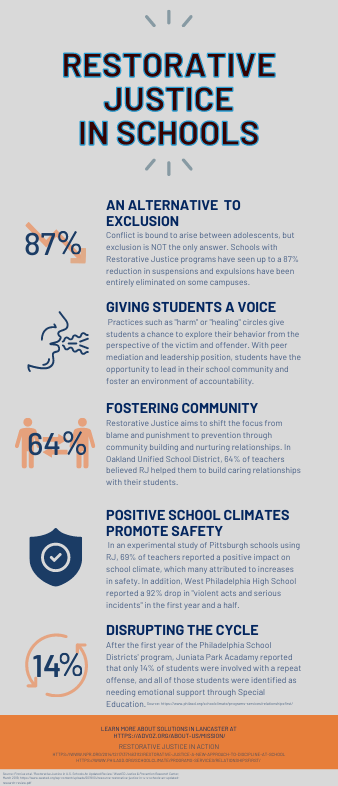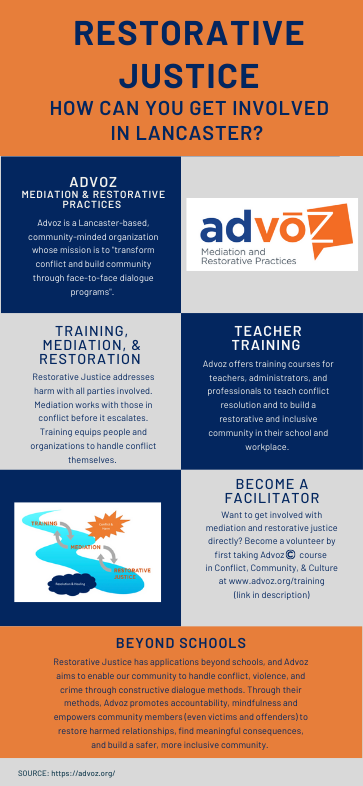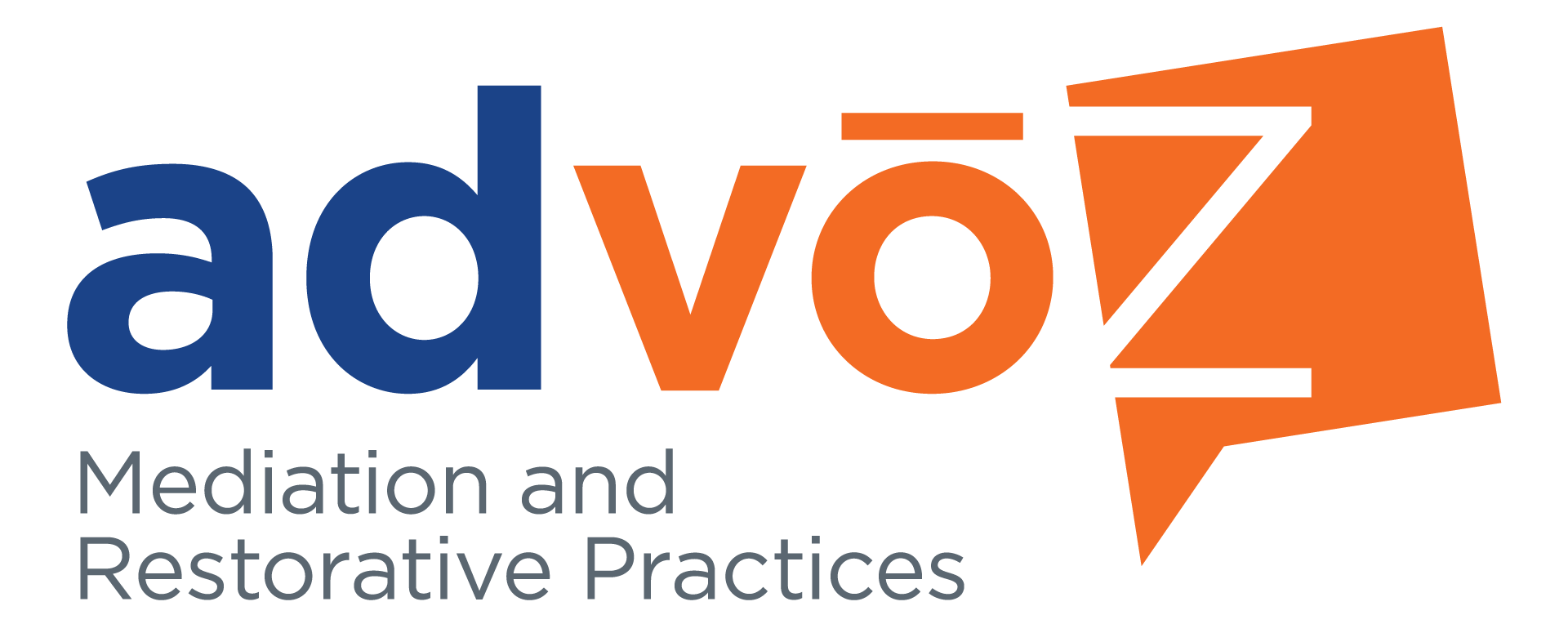In the following post, I will explore what I learned about collaboration while creating the last two infographics in partnership with friends and Chris Fitz. This is the sequel to last week’s blog post and the final in a series covering a new set of infographics. These infographics were designed to provide information on and compare and contrast zero tolerance and restorative methods of discipline within an educational context (see part one on shame here: https://advoz.org/news/on-creating-dialogue-about-exclusionary-discipline-in-education/). The infographics covering restorative justice in schools and ways to get involved with Advoz are available for download at the end of this post.

As I mentioned in my previous post, I was entirely unfamiliar with graphic design and writing infographic text for a broad audience going into this project. In other words, I did not really know what I was getting myself into. After several hours of drafting the text, finding stats, and obsessing over font and image alignment, I realized that this project was not something that I could do alone. They always say that two heads are better than one. In this case, it was four+ heads! To produce a meaningful and helpful product, I would need help and feedback from friends and experts in all things Restorative Justice and Advoz. Indeed, most of the creative process consisted of the virtual collaboration between me, my dear friends, Chris Fitz, and the professor who assigned the solution project. So, it should come as no surprise that the second thing I learned from creating these infographics was there is power in collaboration.
Constructive criticism and collaboration are potent tools in any creative process. Each time I shared a draft with one of my collaborators, I thought that it was perfect. Each time, they pointed out something that I had missed, like a stray comma or unaligned text. More significantly, they shared their perception of the infographics, how they received them and how the text and images would make them feel like an audience member. This was the most crucial feedback in my perspective for several reasons. First, my perception of the infographics as an author will always be different from that of the audience. Second, in creating these infographics, I became a representative of Advoz; so, I wanted to accurately portray their mission and vision and Restorative Justice and practices. That also meant not offending their partners, such as police and school staff. Third, it allowed me to identify areas that I may have been evoking an emotion or feeling, such as shame, that could turn audiences off the message.

Let’s look to a moment of collaboration during the creative process. Specifically, one piece of feedback I received from Chris Fitz. In the “Restorative Justice in Schools” infographic, the subheading “Positive School Climates Promote Safety” was initially titled “Promoting a Positive School Environment.” Chris shared that the language I chose was too “touchy-feely” and may turn parents, teachers, and police for whom students’ safety is the primary concern. Indeed, one of the primary reasons people are skeptical of restorative programs in schools is the worry that it is too soft on students and that they will not learn discipline without consequences. This was a point that I had not considered at the time. As a student, I found data pointing to the positive impact of RJ on school climate and teacher satisfaction extremely compelling. Of course, I wanted to highlight the data as one of the benefits of using restorative methods in schools.
However, collaborating with Chris made me consider different perspectives of what school discipline should accomplish. Also, to build off of last week’s topic, stepping into another party’s shoes forced me to consider what their emotional response could be. In this case, I imagined parents rolling their eyes or feeling concerned for their student’s safety amidst a turbulent time. That is the power of collaboration. One small piece of feedback pushed me to explore other’s perceptions of and responses to the infographics and the topic of school discipline and safety as a whole. Ultimately, I found a way to combine the overwhelming data on the positive impact of RJ on school climate and school safety. In turn, the final product better represented Advoz’s mission, restorative programs, and the benefits of a restorative approach in schools. It also became more persuasive to parties who may be on the fence.
To close, I have reflected a lot on collaboration and feedback in creating this post. When I was a kid, the importance of working together was always emphasized in the way classes were structured. We were assigned worksheets, art pieces, projects to do as a kid. We were taught to listen, communicate, share tools and ideas, and give and receive feedback in those activities. We learned to consider snd value other people’s perspectives. More than that, we came to realize that by working together, the final product might be different than one initially imagined, but the process was more manageable. And maybe, the product was even better than initially imagined. I am sure many of you had similar experiences as a child. Unfortunately, I think the value of working together–collaborating– is something we can forget about as adults. Or at least I did after a long year of being stuck inside, working alone. Collaboration with my partners and Chris reminded me that many minds are better than one and that there is always room to improve. Overall, the lesson in this post is that anything is possible if you work with others, consider alternative perspectives, take feedback, and give yourself space to make mistakes and improve.








